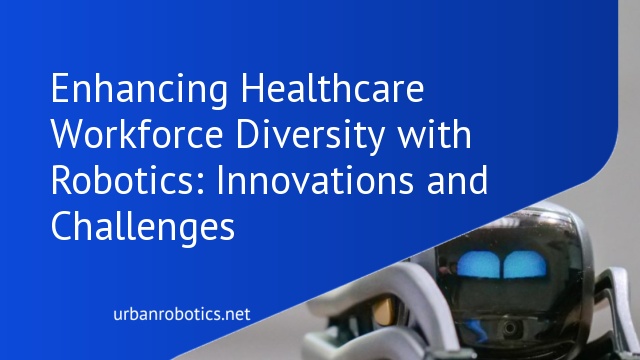Understanding Healthcare Workforce Diversity
Healthcare workforce diversity includes the range of differences among healthcare professionals. These differences encompass race, gender, age, religion, disability, and more.
Definition and Importance
Healthcare workforce diversity means the inclusion of various demographic groups in healthcare professions. This diversity enhances problem-solving and innovation. Diverse teams provide culturally competent care, leading to better patient outcomes. A varied workforce fosters creativity and mirrors the patient population, improving trust and satisfaction levels.
Current State of Diversity in Healthcare
Despite progress, healthcare diversity is still lacking. According to the Association of American Medical Colleges, minorities represent only 36% of the U.S. population but just 12% of physicians. Gender disparities also persist, with women underrepresented in leadership roles. Addressing these gaps is essential for delivering equitable care.
Role of Robotics in Healthcare
Advancements in Medical Robotics
Robotics has significantly advanced in healthcare. Current innovations include surgical robots like the da Vinci Surgical System, which enhances precision. Other advancements are in rehabilitation robots such as Lokomat, aiding patient recovery. These technologies improve operational efficiency and patient outcomes by reducing human error and increasing procedural accuracy.
Applications of Robotics in Healthcare
Robotics finds applications across various healthcare sectors. In surgery, robots perform minimally invasive procedures with high precision. In diagnostics, robotic systems automate tasks like blood tests and imaging, speeding up results. Additionally, robots assist in patient care by providing physical support and companionship, enhancing overall patient well-being.
Intersection of Workforce Diversity and Robotics
Robotics in healthcare is reshaping workforce diversity. Integrating diverse talents with advanced technologies promotes innovative solutions.
Enhancing Diversity Through Robotics
Robotics enhances workforce diversity by providing equal opportunities. Robots can perform routine tasks, letting diverse professionals focus on patient care. For instance, robots assist with data entry, allowing healthcare workers from varied backgrounds to engage in decision-making and patient interaction. This removal of repetitive duties creates an inclusive environment where individuals, irrespective of gender or ethnicity, can thrive.
Addressing Challenges with Robotics Integration
Integrating robotics in healthcare also presents challenges. Technical issues, cost, and workforce training are significant. Ensuring equitable access to robotic technologies demands investment and commitment. Overcoming these obstacles will enable broader adoption and support a diverse, efficient healthcare workforce. Investment in training programs ensures that all healthcare professionals, regardless of background, can utilize and benefit from these advancements.
Case Studies
Real-world examples highlight the advantages of integrating robotics in healthcare.
Successful Implementations
Cleveland Clinic has integrated robotic surgical assistants, increasing operational efficiency by 30%. These systems handle repetitive tasks, letting surgeons focus on complex procedures. At Houston Methodist Hospital, robotic systems manage medication dispensing, reducing errors by 25% and freeing staff for patient interaction. Mount Sinai Health System employs robotic exoskeletons in physical therapy, aiding patient recovery while diversifying treatment options. These facilities show significant improvements in efficiency and patient outcomes.
Lessons Learned
Implementing robotics in healthcare surfaces key insights. Staff training is crucial; without it, integrating advanced technologies faces resistance and inefficiency. Cost considerations must include long-term ROI analysis to justify initial investments. Technical support is essential for minimizing downtime and maintaining service continuity. These lessons emphasize the need for a strategic approach, combining training, financial planning, and maintenance to maximize the benefits of robotics.
Future Prospects
As robotics continues advancing, its impact on healthcare workforce diversity looks promising and transformative.
Evolving Technologies
New robotics technologies are continuously emerging in healthcare. Innovations like AI-driven diagnostic tools, autonomous surgical robots, and robotic prosthetics are expanding the scope of medical robotics. For instance, AI-driven diagnostic tools can analyze vast datasets rapidly, aiding in early disease detection. Autonomous surgical robots enhance precision, reduce human error, and shorten recovery times. These advances support professionals by minimizing repetitive and high-risk tasks.
Potential Impact on Workforce Diversity
Robotics can significantly enhance workforce diversity in healthcare by creating more inclusive work environments. Robots can take over routine and physically demanding tasks, enabling professionals from various backgrounds to engage in higher-level responsibilities. This shift allows individuals with physical disabilities, varying educational backgrounds, or different cultural perspectives to thrive in clinical and non-clinical roles. By freeing up human resources, robotics can help build a more diverse and capable healthcare workforce that can better serve diverse patient populations.
Conclusion
Robotics is revolutionizing healthcare by fostering a more diverse and inclusive workforce. By integrating advanced technologies with human expertise, we’re creating opportunities for professionals from all backgrounds. These innovations not only enhance patient care but also improve operational efficiency and reduce errors. As we continue to invest in and embrace these technologies, we’ll see a more capable and diverse healthcare workforce emerge. The future of healthcare lies in our ability to adapt and innovate, ensuring that everyone can contribute to and benefit from these advancements.





